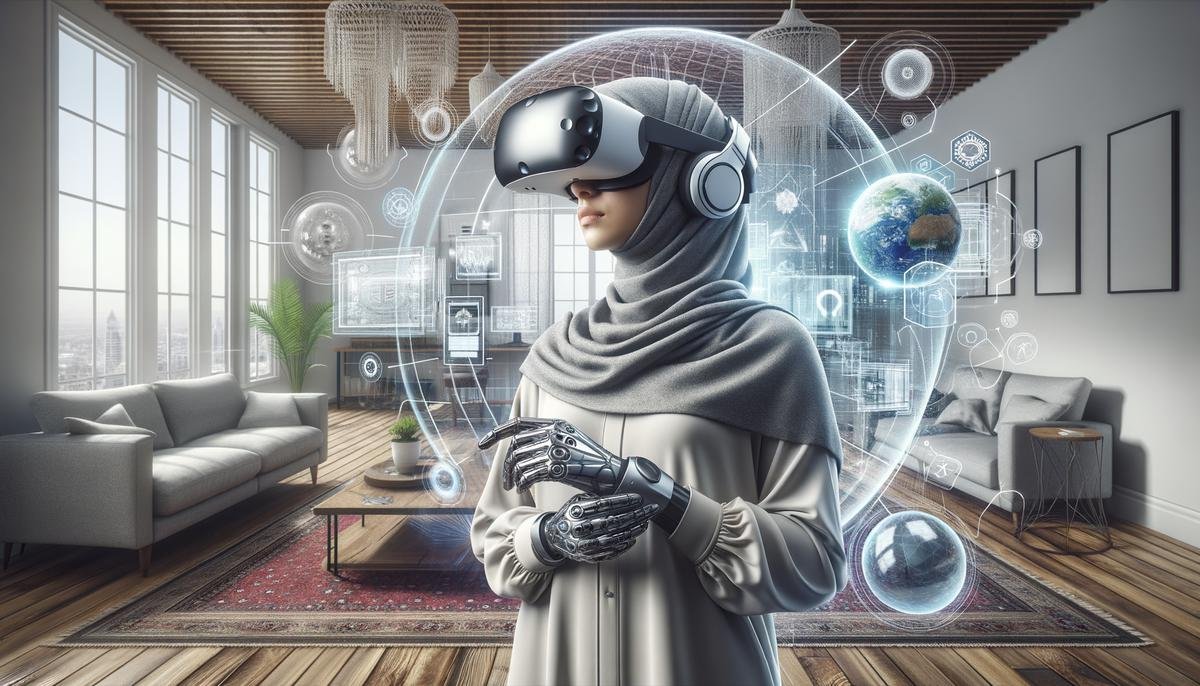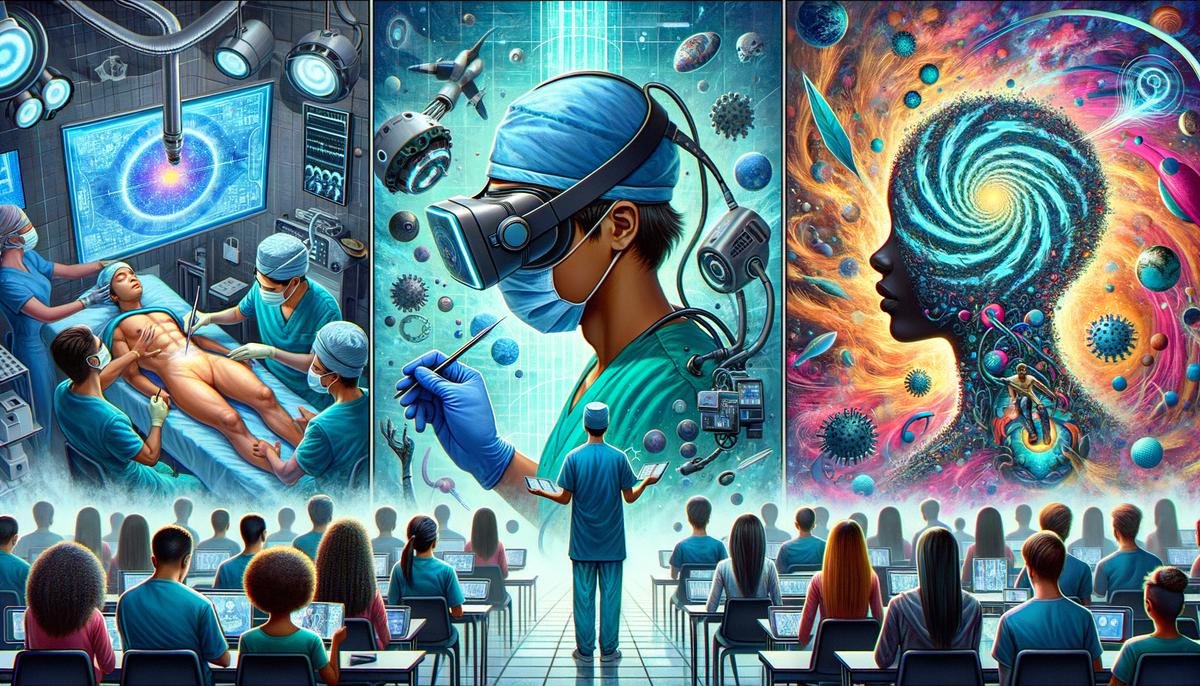Understanding Virtual Reality
Virtual reality (VR) creates digital environments for user interaction. Basic VR systems may involve 3D images on computer screens, while non-immersive VR, like video games, offers a glimpse into fabricated spaces. Semi-immersive VR, such as flight simulators, provides more engagement but doesn't fully immerse users.
Fully immersive VR envelops users in sights, sounds, and sometimes scents. Special gear like headsets and data gloves are essential, creating experiences that include haptic feedback. These systems impact gaming and healthcare significantly.
Collaborative VR brings people together virtually, while augmented reality (AR) overlays digital features onto the physical world. Mixed reality blends real and virtual worlds into one experience.
Key attributes of VR include:
- Immersion
- Interaction
- Visual realism
- Spatial audio
Some systems employ multi-sensory feedback and spatial collaboration. AI integration allows environments to adapt dynamically to user actions.
VR extends into training, education, retail, healthcare, real estate, entertainment, and sports. As the technology improves in accessibility and affordability, it continues to redefine how we perceive and interact with our world.

AGI's Role in VR
Incorporating Artificial General Intelligence (AGI) into virtual reality could revolutionize user experiences. AGI could analyze and learn from user interactions, personalizing environments to boost engagement and enjoyment. This could lead to more intelligent NPC behaviors, realistic simulations, and dynamic storytelling.
AGI can optimize VR systems by:
- Predicting user needs
- Managing system loads
- Reducing latency
- Enhancing smoothness
This has significant implications for fields like surgery simulations or remote diagnostics, where precision is critical.
The integration of AGI into VR promises to expand the boundaries of what can be achieved, offering each user a unique universe to explore.

Applications of VR and AGI
The combination of VR and AGI is transforming industries by delivering improved efficiency and engagement. In gaming, AGI-enabled VR experiences offer dynamic gameplay that evolves with player decisions and skill levels.
In healthcare, this synergy enhances patient treatment and medical training. VR simulations become adaptive, providing real-time feedback to surgeons based on historical data and current performance.
Education benefits from AGI-augmented VR platforms, turning learning into an interactive and immersive experience. AGI can evaluate student performance and adjust the curriculum to individual needs.
"By providing the project team with a fully immersive experience, we get feedback that helps reduce safety-related risks both from a technical and personnel point of view."
Training programs in high-risk fields like firefighting or space exploration use VR simulations augmented by AGI to create safe environments for practice. The entertainment industry sees AGI and VR creating more personalized and engaging content.
AGI's involvement is crucial in optimizing these applications by analyzing data to improve system efficiency and user engagement. The amalgamation of VR and AGI creates new paradigms for human-technology interaction.

Challenges and Future Prospects
The convergence of AGI and VR faces several challenges:
- Technical limitations hindering seamless integration
- Ethical concerns about privacy and consent
- Security issues and cybersecurity threats
Despite these obstacles, the future of AGI and VR holds promise. Technological advancements are expected to overcome current barriers, increasing accessibility and reducing costs. VR experiences are set to become more immersive and adaptive, with AGI enabling systems to offer environments that are highly interactive and intuitive.
Ongoing innovation in VR interfaces promises a future where multisensory experiences are commonplace. As AGI and VR continue to evolve, balancing ethical and security considerations with technical progress will be key to unlocking their potential.
According to a recent report, the global virtual reality market is expected to reach $313.5 billion by 20321. This growth is driven by increased accessibility, with the emergence of affordable headsets and integration of VR features into mobile devices.

The fusion of Virtual Reality and Artificial General Intelligence presents a future where digital experiences are engaging and innovative, reshaping how we interact with virtual environments.
- International Market Analysis Research and Consulting Group. Global Virtual Reality Market Report.



